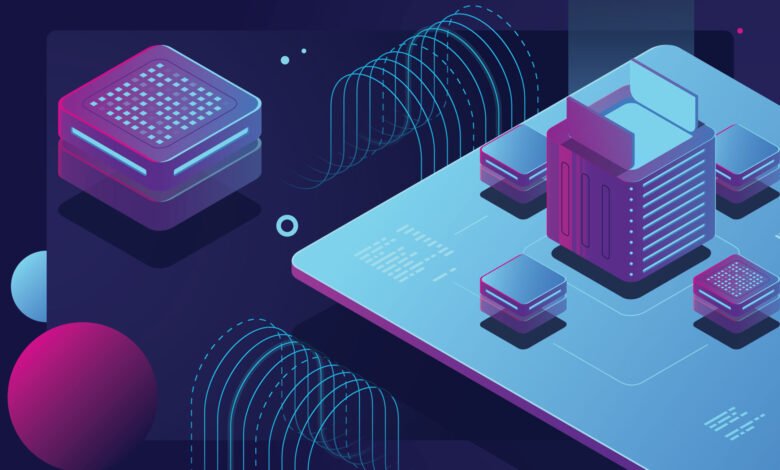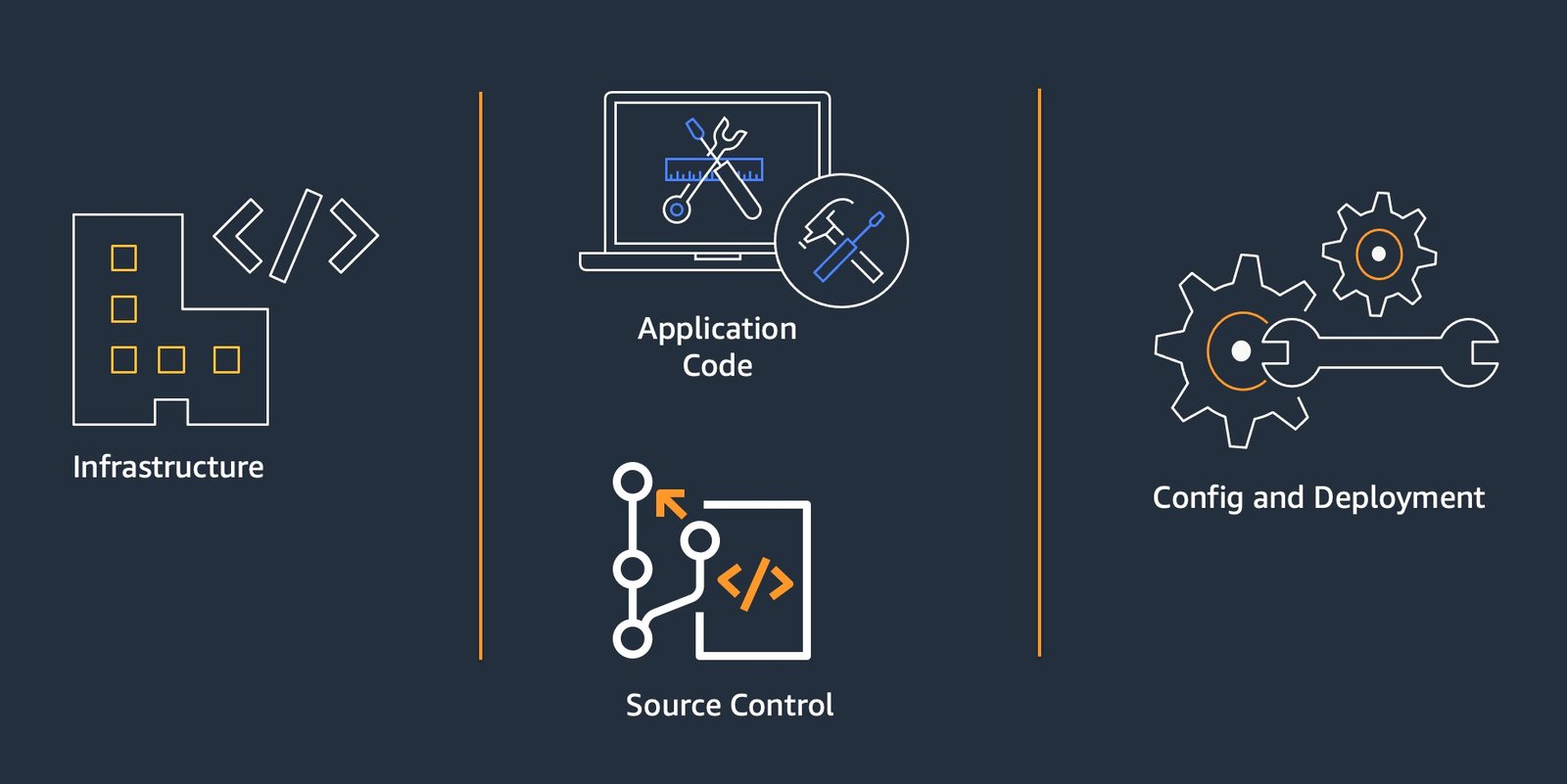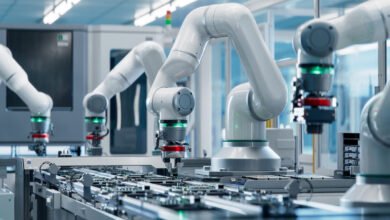
The convergence of serverless computing and artificial intelligence has ushered in a transformative era for developers and organizations seeking to deploy machine learning applications without the complexity of infrastructure management. Serverless AI represents a paradigm shift that eliminates the traditional barriers associated with building, deploying, and scaling ML models, allowing teams to focus exclusively on innovation and model performance rather than server provisioning and maintenance.
In today’s rapidly evolving technological landscape, serverless machine learning has emerged as a game-changing approach that democratizes access to advanced AI capabilities. Organizations of all sizes can now leverage sophisticated deep learning models, natural language processing algorithms, and computer vision systems without investing heavily in physical hardware or dedicated DevOps teams. This revolutionary architecture automatically handles resource allocation, scales seamlessly based on demand, and implements a pay-per-use pricing model that significantly reduces operational costs.
The appeal of serverless AI architecture extends beyond mere cost savings. It enables rapid prototyping, accelerates time-to-market, and provides unprecedented flexibility in deploying ML inference systems. Whether you’re building real-time recommendation engines, fraud detection systems, image recognition applications, or predictive analytics platforms, serverless computing offers the agility and scalability required to meet modern business demands. This approach has gained tremendous traction among startups and enterprises alike, with major cloud providers including AWS, Google Cloud, and Azure offering robust serverless ML solutions.
As artificial intelligence continues to permeate every industry sector, the ability to deploy scalable machine learning applications efficiently has become a critical competitive advantage. Serverless AI not only simplifies the technical complexity but also empowers data scientists and developers to iterate faster, experiment freely, and deliver intelligent applications that can automatically scale from zero to millions of requests without manual intervention. This comprehensive guide explores the architecture, benefits, implementation strategies, and best practices for building production-ready serverless machine learning systems that drive real business value.
What is Serverless AI
Serverless AI combines the principles of serverless computing with artificial intelligence and machine learning workloads to create a fully managed environment for deploying ML models. In a serverless architecture, developers write code and deploy models without managing underlying servers, operating systems, or runtime environments. The cloud provider automatically handles infrastructure provisioning, scaling, patching, and maintenance.
The term “serverless” can be misleading—servers still exist, but they’re completely abstracted from the developer’s workflow. When building serverless machine learning applications, you focus solely on your model logic, training data, and inference code while the platform manages everything else. This abstraction layer represents a significant evolution from traditional deployment methods, where teams needed extensive expertise in container orchestration, load balancing, and infrastructure monitoring.
Serverless AI platforms typically operate on an event-driven model where ML inference requests trigger function executions. These functions load your trained model, process input data, generate predictions, and return results—all within milliseconds. The underlying infrastructure automatically scales based on incoming request volume, spinning up additional compute resources during peak demand and scaling down to zero during idle periods.
Key Components of Serverless Machine Learning Architecture
Function-as-a-Service (FaaS)
Function-as-a-Service forms the foundation of most serverless AI implementations. Services like AWS Lambda, Google Cloud Functions, and Azure Functions allow developers to deploy machine learning inference code as standalone functions. These functions execute in stateless containers that automatically scale horizontally based on demand.
For ML applications, FaaS provides several advantages, including automatic resource management, built-in fault tolerance, and simplified deployment pipelines. Developers package their trained models alongside inference code, and the platform handles request routing, load balancing, and infrastructure scaling without manual intervention.
Managed AI Services
Cloud providers offer managed AI services that abstract even the model deployment complexity. Services like AWS SageMaker Serverless Inference, Google Cloud AI Platform, and Azure Machine Learning provide fully managed environments where you simply upload trained models and receive scalable API endpoints. These platforms handle model versioning, A/B testing, monitoring, and automatic scaling.
These managed services excel at supporting various machine learning frameworks, including TensorFlow, PyTorch, scikit-learn, and XGBoost. They provide optimized runtime environments that significantly reduce cold start times and improve inference latency for production workloads.
Event-Driven Architecture
Serverless machine learning thrives in event-driven architectures where model predictions are triggered by specific events such as file uploads, API requests, database changes, or scheduled tasks. This pattern enables asynchronous processing, batch inference workflows, and real-time prediction systems.
Event sources like Amazon S3, message queues, streaming platforms, and HTTP endpoints can automatically trigger ML inference functions. This decoupled architecture improves system resilience, enables parallel processing, and facilitates complex workflows involving multiple models and data transformations.
Storage and Data Management
Serverless AI applications require efficient storage solutions for models, training data, and inference results. Object storage services like Amazon S3, Google Cloud Storage, and Azure Blob Storage provide scalable, durable storage with seamless integration into serverless workflows.
For larger deep learning models exceeding function deployment package limits, cloud file systems like Amazon EFS (Elastic File System) enable multiple function instances to share model artifacts without duplication. This approach significantly reduces deployment package sizes and improves function initialization times.
Benefits of Serverless Machine Learning
Cost Optimization
Serverless computing delivers exceptional cost efficiency through its pay-per-use pricing model. Organizations only pay for actual compute time consumed during ML inference rather than maintaining constantly running servers. This granular billing model can reduce costs by up to 70% compared to traditional always-on infrastructure, especially for applications with variable or unpredictable traffic patterns.
The elimination of idle resource costs makes serverless AI particularly attractive for organizations with sporadic inference workloads, experimental projects, or applications experiencing significant traffic fluctuations. You’re not paying for capacity during nights, weekends, or low-demand periods.
Automatic Scaling
Scalability represents one of the most compelling advantages of serverless machine learning architecture. The platform automatically handles scaling from zero to thousands of concurrent requests without manual intervention or capacity planning. During traffic spikes, the infrastructure provisions additional compute resources within seconds, ensuring consistent performance.
This automatic scaling capability proves invaluable for applications facing unpredictable demand patterns, seasonal variations, or viral growth scenarios. Your ML application maintains responsiveness regardless of request volume without over-provisioning expensive resources.
Reduced Operational Overhead
By abstracting infrastructure management, serverless AI dramatically reduces operational complexity. Development teams eliminate responsibilities for server maintenance, security patching, operating system updates, and capacity monitoring. This allows data scientists and developers to concentrate on model improvement, feature engineering, and business logic rather than infrastructure concerns.
The reduction in operational overhead translates to faster development cycles, lower staffing requirements, and improved time-to-market for machine learning applications. Small teams can build and maintain production-grade AI systems without dedicated infrastructure specialists.
Improved Fault Tolerance
Serverless platforms provide built-in redundancy and fault tolerance. If an individual function instance fails, the platform automatically retries the request on a different instance without impacting application availability. This self-healing capability ensures high reliability for ML inference services without implementing complex failover mechanisms.
Geographic distribution across multiple availability zones provides additional resilience against data center failures, ensuring your serverless machine learning applications maintain availability even during regional outages.
Faster Development and Deployment
Serverless architectures accelerate development workflows through simplified deployment pipelines and infrastructure abstraction. Developers deploy code changes by uploading new function versions without coordinating complex deployment procedures or managing rolling updates across server fleets.
This streamlined deployment process enables continuous integration and continuous deployment (CI/CD) practices, allowing teams to iterate rapidly, experiment with new models, and respond quickly to changing business requirements. The ability to deploy ML models in minutes rather than days represents a significant competitive advantage.
Popular Serverless AI Platforms and Services

AWS Serverless Machine Learning Stack
Amazon Web Services offers a comprehensive ecosystem for serverless AI applications. AWS Lambda serves as the core compute service, supporting functions up to 10GB in size with container image deployments ideal for larger machine learning models. Lambda integrates seamlessly with other AWS services for end-to-end ML workflows.
Amazon SageMaker Serverless Inference provides fully managed model hosting with automatic scaling and pay-per-inference pricing. The service handles model deployment, versioning, and monitoring while supporting popular frameworks like TensorFlow, PyTorch, and MXNet. SageMaker automatically provisions compute capacity based on request volume and scales down to zero during idle periods.
AWS Lambda, combined with Amazon EFS, enables deploying large deep learning models exceeding traditional deployment package limits. This configuration allows multiple function instances to access shared model artifacts, reducing cold start times and improving inference performance.
Google Cloud AI Platform
Google Cloud Platform delivers serverless machine learning capabilities through Cloud Functions, Cloud Run, and Vertex AI. Google’s Vertex AI Pipelines provides entirely serverless orchestration for complex ML workflows, including data preprocessing, model training, evaluation, and deployment.
The platform supports both Kubeflow Pipelines and TensorFlow Extended for defining production ML pipelines. Google’s serverless infrastructure automatically manages pipeline execution, resource provisioning, and job scheduling without requiring Kubernetes expertise or infrastructure management.
Azure Machine Learning
Microsoft Azure offers serverless AI services through Azure Functions and Azure Machine Learning. The platform provides managed endpoints for deploying trained models with automatic scaling and comprehensive monitoring capabilities. Azure’s integration with other Microsoft services creates a unified ecosystem for enterprise machine learning applications.
Azure Machine Learning supports real-time inference, batch predictions, and edge deployment scenarios through a consistent interface. The service handles model versioning, A/B testing, and gradual rollouts while maintaining enterprise-grade security and compliance.
Specialized Serverless ML Platforms
Several specialized platforms focus exclusively on serverless AI workloads. Services like Modal, Cerebrium, and Banana.dev provide GPU-accelerated serverless inference specifically optimized for deep learning models. These platforms address limitations in traditional serverless offerings by providing access to powerful GPU instances on demand.
These specialized services excel at handling computationally intensive workloads like image generation, video processing, and large language model inference. They implement sophisticated warm pool management to minimize cold start latency while maintaining cost efficiency through aggressive scale-to-zero policies.
Building Serverless ML Applications: Implementation Guide
Model Training and Preparation
Before deploying a serverless machine learning application, you must train and optimize your model. While training typically occurs on dedicated GPU instances or managed services like SageMaker Training Jobs, the trained model must be prepared for serverless deployment.
Model optimization techniques, including quantization, pruning, and knowledge distillation, reduce model size and improve inference speed—critical factors for serverless environments with memory and execution time constraints. Export models in optimized formats like ONNX, TensorFlow Lite, or CoreML, depending on your target platform and framework requirements.
Package model artifacts with all dependencies, including framework libraries, preprocessing utilities, and configuration files. For AWS Lambda, create deployment packages or container images containing your model and inference code. Ensure total package size remains within platform limits or leverage external storage solutions like Amazon EFS for larger models.
Creating Serverless Inference Functions
Develop inference functions that load models, process input data, and generate predictions efficiently. Implement lazy loading strategies where models are loaded once during function initialization and reused across multiple invocations, significantly reducing latency for subsequent requests.
Your inference code should handle input validation, data preprocessing, model prediction, and response formatting. Implement error handling and logging to facilitate debugging and monitoring in production environments. Consider implementing request batching for improved throughput when processing multiple predictions simultaneously.
For AWS Lambda, structure your code to minimize cold start times by keeping initialization logic efficient and avoiding unnecessary imports. Utilize Lambda layers for common dependencies shared across multiple functions, reducing deployment package sizes and simplifying updates.
API Gateway and Request Routing
Expose your serverless ML functions through API gateways that handle HTTP request routing, authentication, rate limiting, and response transformation. Services like Amazon API Gateway, Google Cloud Endpoints, and Azure API Management provide fully managed API infrastructure.
Configure request validation, authentication mechanisms (API keys, OAuth, JWT), and CORS policies appropriate for your security requirements. Implement request throttling and quota management to protect your ML inference endpoints from abuse and control costs.
Consider implementing request caching for frequently accessed predictions to reduce function invocations and improve response times. Cache strategies prove particularly effective for applications with repetitive inference patterns or slowly changing input data.
Monitoring and Observability
Implement comprehensive monitoring for your serverless machine learning applications. Track metrics including invocation counts, execution duration, error rates, cold start frequency, and prediction accuracy. Cloud platforms provide built-in monitoring through services like Amazon CloudWatch, Google Cloud Monitoring, and Azure Monitor.
Implement distributed tracing to understand request flows across multiple services and identify performance bottlenecks. Tools like AWS X-Ray provide detailed insights into function execution, external service calls, and error propagation paths.
Log prediction inputs and outputs for model performance monitoring and debugging. Implement anomaly detection to identify unusual patterns indicating model drift, data quality issues, or infrastructure problems requiring investigation.
Use Cases for Serverless AI Applications
Real-Time Image Recognition
Serverless AI excels at building image recognition systems that classify, detect objects, or extract features from uploaded images. Applications include content moderation, product categorization, medical imaging analysis, and visual search engines.
Users upload images, triggering serverless functions that load pre-trained deep learning models like ResNet, MobileNet, or YOLO for inference. Results are returned within milliseconds, providing seamless user experiences without maintaining dedicated inference servers.
Natural Language Processing
Deploy NLP applications, including sentiment analysis, text classification, entity extraction, and language translation, using serverless architectures. These applications process user text inputs, API requests, or streaming data from message queues.
Serverless machine learning enables building chatbots, content recommendation systems, and document analysis pipelines that automatically scale based on request volume. Pre-trained models from Hugging Face, spaCy, or custom-trained transformers can be deployed as serverless functions.
Predictive Analytics
Implement predictive models for forecasting, anomaly detection, and risk assessment using serverless AI. Applications include fraud detection, customer churn prediction, demand forecasting, and predictive maintenance systems.
These systems process incoming data streams, database changes, or scheduled batch jobs to generate predictions. The event-driven nature of serverless computing aligns perfectly with real-time prediction requirements while maintaining cost efficiency.
Recommendation Engines
Build personalized recommendation systems that suggest products, content, or actions based on user behavior and preferences. Serverless inference handles recommendation generation triggered by user interactions, page views, or scheduled batch processing.
The automatic scaling capabilities ensure recommendation engines maintain performance during traffic spikes while eliminating costs during low-activity periods. This architecture supports both real-time and batch recommendation workflows efficiently.
Challenges and Considerations
Cold Start Latency
Cold starts represent a significant challenge in serverless machine learning, where function initialization can introduce latency ranging from hundreds of milliseconds to several seconds. When new function instances are created, they must download dependencies, load models into memory, and initialize frameworks before processing requests.
Mitigation strategies include provisioned concurrency (keeping warm instances ready), smaller model sizes, optimized container images, and strategic function warming through scheduled pings. Specialized serverless AI platforms with GPU support implement sophisticated warm pool management to minimize cold start impacts.
Execution Time Limits
Serverless platforms impose maximum execution time limits—typically 15 minutes for AWS Lambda and similar constraints for other providers. This limitation affects batch inference workloads and complex deep learning models with lengthy inference times.
Design applications to process data in smaller chunks, implement asynchronous processing patterns, or utilize specialized batch inference services for long-running workloads. Break complex workflows into multiple smaller functions that chain together through message queues or workflow orchestration services.
Memory and Compute Constraints
Function memory limits (up to 10GB for AWS Lambda) constrain the size and complexity of deployable ML models. Large deep learning models may require model compression techniques, external storage solutions, or migration to managed inference services with fewer constraints.
CPU-only execution environments on standard serverless platforms limit performance for computationally intensive models. Consider specialized serverless GPU providers or managed services like SageMaker Serverless Inference for GPU-accelerated workloads requiring higher throughput.
Vendor Lock-in Concerns
Building serverless AI applications on specific cloud platforms can create vendor dependencies and migration challenges. Platform-specific APIs, services, and deployment mechanisms may complicate multi-cloud strategies or future platform migrations.
Mitigate lock-in risks by implementing abstraction layers, utilizing containerized deployments, and choosing portable frameworks. Consider multi-cloud architectures or hybrid approaches combining serverless and traditional deployment methods for critical applications.
Best Practices for Serverless Machine Learning

Optimize Model Size and Performance
Reduce model size through quantization, pruning, and model distillation to improve deployment speed and inference latency. Smaller models load faster, consume less memory, and execute more quickly in resource-constrained serverless environments.
Benchmark model performance across different optimization techniques to balance prediction accuracy against inference speed and resource consumption. Profile inference code to identify bottlenecks and optimize hot paths affecting latency.
Implement Efficient Caching Strategies
Cache model artifacts, preprocessing pipelines, and frequently accessed data to reduce initialization overhead. Load models during function initialization rather than within request handlers to enable reuse across multiple invocations. Implement response caching for deterministic predictions or slowly changing inputs. Cache computed features and intermediate results to avoid redundant calculations across requests.
Design for Observability
Implement comprehensive logging, metrics collection, and distributed tracing from the beginning. Monitor prediction accuracy, input data distributions, and model performance metrics to detect degradation early. Track business metrics alongside technical metrics to understand how ML model performance impacts user experience and business outcomes. Implement alerting for anomalies, errors, and performance degradations requiring immediate attention.
Secure Your ML Endpoints
Implement robust authentication and authorization mechanisms to protect ML inference endpoints from unauthorized access. Use API keys, OAuth tokens, or JWT authentication depending on your security requirements. Validate and sanitize all inputs to prevent injection attacks and adversarial inputs designed to manipulate model predictions. Implement rate limiting and request throttling to protect against abuse and control costs.
Version Your Models
Maintain strict model versioning practices to track deployed models, facilitate rollbacks, and support A/B testing. Tag model artifacts with version numbers, training dates, and performance metrics for auditing and comparison. Implement gradual rollout strategies when deploying new model versions to production. Monitor performance metrics during rollouts and implement automatic rollback mechanisms if degradation is detected.
Future Trends in Serverless AI
GPU-Accelerated Serverless Inference
The emergence of serverless GPU platforms addresses computational limitations of traditional serverless offerings. Services providing on-demand GPU instances enable deploying complex deep learning models requiring parallel processing capabilities previously unavailable in serverless environments.
This trend democratizes access to GPU-accelerated inference without requiring substantial upfront investment in hardware or long-term compute commitments. Expect continued innovation in GPU provisioning speed, pricing models, and supported frameworks.
Edge Computing Integration
Serverless AI is expanding beyond cloud data centers to edge locations closer to end users. Edge computing reduces latency for time-sensitive applications by processing data near its source. Serverless edge platforms enable deploying ML models globally with automatic geographic distribution. This convergence of edge computing and serverless architectures supports emerging applications, including autonomous vehicles, IoT analytics, and augmented reality, requiring ultra-low latency inference capabilities.
AutoML and Automated Deployment
Automated machine learning platforms increasingly integrate with serverless infrastructure to streamline the entire ML lifecycle from training to deployment. These platforms automatically select appropriate models, optimize hyperparameters, and deploy winning models to serverless endpoints. This integration reduces the expertise required to build production ML applications and accelerates time-to-value for organizations adopting AI technologies.
Specialized AI Accelerators
Cloud providers are developing custom silicon optimized for machine learning inference, including Google’s TPUs, AWS Inferentia, and other AI accelerators. Serverless platforms integrating these specialized processors will deliver improved performance and cost efficiency for AI workloads. Expect continued innovation in hardware acceleration specifically designed for serverless execution patterns and pay-per-use pricing models.
More Read: Cloud AI Services Comparison AWS vs Azure vs Google Cloud
Conclusion
Serverless AI represents a transformative approach to building scalable machine learning applications that eliminates infrastructure complexity while delivering exceptional cost efficiency and automatic scaling capabilities. By abstracting server management and implementing pay-per-use pricing, serverless computing democratizes access to advanced AI capabilities for organizations of all sizes. The architecture excels across diverse use cases, including real-time image recognition, natural language processing, predictive analytics, and recommendation engines.
While challenges like cold start latency and execution time limits require careful consideration, emerging solutions, including serverless GPU platforms and specialized AI accelerators, continue advancing capabilities. As the technology matures with edge computing integration and automated deployment workflows, serverless machine learning will increasingly become the default choice for teams seeking rapid development, operational simplicity, and production-grade ML applications that scale effortlessly from prototype to millions of users. Organizations embracing serverless AI architecture today position themselves to innovate faster, reduce operational overhead, and deliver intelligent applications that drive meaningful business value in an increasingly AI-driven world.











